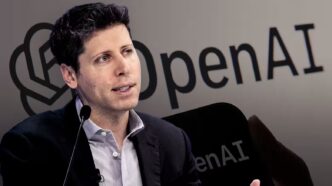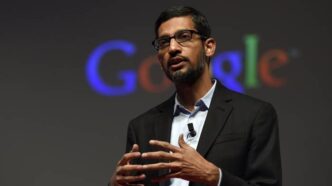OpenAI’s Stargate project, an ambitious $500 million effort to build advanced AI data centers—has hit a wall. Once expected to redefine how artificial intelligence scales globally, the project is now bogged down by rising tariffs, market volatility, and investor hesitation.
Initially launched with bold ambitions, Stargate is central to OpenAI’s strategy for building infrastructure powerful enough to support the next wave of AI models. These data centers would provide massive compute capacity, enabling faster training and inference for everything from language models to multimodal AI systems. But despite OpenAI’s momentum in the AI race, this key infrastructure push is now slowing.
Bloomberg reports that investor enthusiasm has cooled dramatically in recent months. Major players like SoftBank, who had earlier expressed strong interest in funding the project, have yet to move beyond early conversations. No detailed financing framework has been created. As a result, OpenAI’s Stargate project remains stuck in planning mode, with no clear launch date in sight.
One of the main culprits is tariffs—specifically, new or expected import costs that are raising the price of essential components. From server racks and high-end GPUs to cooling infrastructure and networking gear, nearly every part of a data center is seeing price hikes. According to TD Cowen, a 5% to 15% increase in buildout costs is likely. For a project of this scale, that margin could mean tens of millions in unexpected expenses.
And it’s not just the money. Investors are growing uneasy about the broader AI infrastructure market. Over the past few quarters, companies like Microsoft and Amazon have started re-evaluating their own data center expansion plans. Some construction projects have been paused or scaled back, especially in regions where energy costs are rising or regulatory delays are common. These shifts signal growing caution among hyperscalers, and investors are taking note.
If Big Tech is being cautious, institutional investors are even more so. Many see potential overcapacity on the horizon. The AI boom has led to rapid infrastructure growth, but it’s unclear how quickly that capacity will be monetized—especially as cheaper, more efficient AI services emerge. In that environment, committing hundreds of millions to new facilities becomes a harder sell.
OpenAI’s Stargate project was designed to change that equation. It aimed to be a shared, next-gen AI infrastructure layer—one that could meet OpenAI’s own needs and also support broader industry demand. By offering flexible compute access and scaling capabilities, Stargate could have positioned OpenAI as a key infrastructure provider, not just a model developer.
But that vision hinges on capital. And right now, capital is harder to come by.
SoftBank’s hesitation is especially notable. Known for making bold bets in tech, the firm had reportedly planned to provide significant capital for Stargate. But as Bloomberg points out, the lack of a clear structure or partner strategy has delayed progress. Without a formal financing plan, other potential backers are staying on the sidelines.
Timing is also a factor. The AI space is evolving fast. With new models launching, enterprise adoption expanding, and regulatory scrutiny increasing, infrastructure investments must be agile and timely. Delays now could put Stargate at a disadvantage—especially if rivals launch similar initiatives faster or more efficiently.
The pressure is mounting on OpenAI to solve this puzzle. Its models, including GPT-4 and future releases, require growing compute power. If cloud partnerships alone can’t meet those needs, OpenAI will need to control more of its own infrastructure. That’s what Stargate was supposed to deliver.
Yet in this climate, building from the ground up has never looked riskier.
For now, the future of OpenAI’s Stargate project hangs in the balance. Tariffs, shifting market dynamics, and investor reluctance have all converged to slow momentum. While OpenAI still has the vision, executing it will require navigating a far more complicated financial and geopolitical landscape than originally expected.













